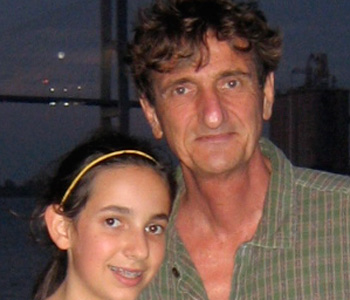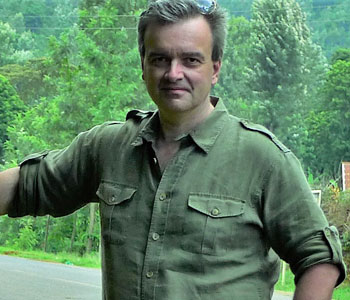Anne Dunlop
Painted Palaces: The Rise of Secular Art in Early Renaissance Italy
Pennsylvania State University Press
328 pages, 10 x 9 inches
ISBN 978 0271034089
Painted Palaces is essentially an argument against a tenacious idea in art history – that one day around 1500, artists woke up, threw off the oppression of religion, and invented the modern, secular artwork.
The early Renaissance, roughly 1250 to 1450, is probably the most pivotal and least examined period in Western art. In Italy especially it brought a whole series of fundamental shifts. But our idea of the period has been based almost entirely on devotional and civic commissions. No one had explored painting with secular subject-matter before about 1450, or how the category of the secular took shape in the first place.
This book is the first study of the decoration of Italian palaces and homes between about 1300 and the mid-fifteenth century. The painted rooms I discuss come from all over Italy; a few are from Northern Europe. Many of them are unknown even to Renaissance specialists. These early domestic commissions were hugely important because they laid a unique stress on two things that would be central to later Western art: a kind of exaggerated mimesis, and the need for an engaged viewer, actively interpreting the illusion of the work as a key to something beyond it.
Painted Palaces is a book on the prehistory of modern painting as a secular art.

It's precisely the aesthetic or conceptual aspects of early art that art history as a discipline has tended to skate over or ignore.
There wasn’t one moment when the book started to take shape in my mind, but I’ve been thinking about it, off and on, since I was a student. If you flip through most textbooks, there are Antique paintings with secular subjects, and there are rooms like Mantegna’s Camera Picta in Mantua (1465-1474). But there isn’t much in between, and I remember wondering about the gap. So when I started Painted Palaces, I had two goals: first, to locate surviving secular painting cycles; and second, to see what they suggested about models of the artwork in the period.
The chronological and geographical limits grew from the material itself. Though secular subjects are recorded all through the Middle Ages, it's only from the mid-thirteenth century that large-scale room decoration examples survive, and so that became the starting point.
Initially, I was defining “secular” in opposition to existing categories of civic and sacred art, to fill in the information we seemed to be missing: not devotional imagery, and in spaces that were primarily residential. But it became clear that the idea of “secular painting” was itself a product of this experimental period, and that the painted rooms were different from civic and sacred spaces.
The imagery is often surprising and bizarre: in the main ceremonial hall of La Manta in Piemonte, painted before 1420, naked lovers fondle each other in a giant fountain of youth and standing warriors look on nearby.
But I didn't want to write a study of patrons or of iconographies. The issues seemed aesthetic as much as socio-historical, and it's precisely the aesthetic or conceptual aspects of early art that art history as a discipline has tended to skate over or ignore.
At the castle of Sabbionara north of Verona, for instance, there's a mid-Trecento room painted as if it were entirely covered with fur hangings, and the figures of lovers appear and disappear behind the painted flaps. The Palazzo Trinci in Foligno is a later example. There's a room painted around 1415 with Roman heroes standing in niches, but also with a fictive balcony with Renaissance onlookers, watching both the real inhabitants of the room and the painted Romans.
Over and over, there were these complicated uses of illusionism and fictive space - qualities which suggested a sophisticated viewership, and which are more generally associated with High Renaissance and mannerist art rather than the years around 1300. In many ways our ideas of the early Renaissance go back to Vasari: we agree that something changed, and that mimesis re-emerged as a basic marker of painting as an art. But we don't agree on why this happened.
The question is part of a much larger argument in art and cultural history - what might be called the “secularization thesis.” The apparent rise of secular subject-matter in the later fifteenth century gets used as evidence for a shift in the nature of art itself – roughly, that the artist had an increasing freedom to experiment and to innovate.
But secularization is also linked in different ways to the rise of mimesis, most notably in books like Hans Belting’s The Image and its Public in the Middle Ages and Likeness and Presence. Belting looked at devotional images, particularly those icons thought to be true portraits of Christ and the Virgin Mary, and he linked the rise in the illusionistic qualities of the image to a loss of faith. The traditional justification for art was a didactic one. Images existed to incite devotion, or to shape behavior; but as people came to believe less in the real presence of the holy person in the picture and the auratic qualities of the image, they had to be convinced by an appeal to lived experience.
This is an argument also found in Otto Kurtz and Ernst Kris's Legend, Myth, and Magic in the Image of the Artist, or in Walter Benjamin's idea of the aura of the modern artwork. In this model mimesis can only be an excess, a negative supplement.
Secular painting suggested a different direction. I argue that the category of the secular artwork developed in parallel with Trecento debates about vernacular literature, especially poetry. Dante, Petrarch, Boccaccio - all the major figures of the period worked to define the proper means and aims of a vernacular literary production. They codified three types of subject-matter, drawn from ideas about rhetoric: exemplary figures, love, and war. These three also became the major chapter divisions of Painted Palaces. Each had a distinct purpose: to teach, to stir leadership, and to delight.
These debates also stressed allegory as the basic interpretative model for the artwork: a surface fiction “veiling” a meaning that the viewer worked to uncover. As these ideas moved into visual culture they created a model in which the viewer was expected to “see through” the surface illusion to the meaning beyond. So painters were experimenting with full-scale, illusionistic spatial environments, and their elite audiences expected self-conscious mimetic fictions as cues for their interpretation. Each drove the other.
A reader might be surprised to find a full-page picture of a mechanical rooster toward the beginning of Painted Palaces. The bird is more than three feet tall, and it was made about 1352 as part of the clock of Strasbourg Cathedral. A few pages later there's a folio from a treatise on military engineering, showing how to make skeletons “rise” from a coffin using a clockwork mechanism. Both are examples of the range of materials used to explore the aesthetics of the period.
There is not much dedicated writing on specific artworks before the mid-fifteenth century, and so alongside the painting cycles, the book examines such things as costume history and tournament trophies, manuscripts and fountains for what they reveal about ideas of art before the age of Leon Battista Alberti.
The rooster and rising dead men are part of the extensive discussion of imitation as an artistic goal. Automata and moving images developed in the same period and in the same elite court circles as early secular cycles. Not much survives, but there are well-documented cases. In the palace and gardens of Hesdin, begun in 1288, there were gesticulating monkeys, windows that shut themselves, and a mechanical tree with birds that spouted water.
Automata are probably the clearest case of the blurring of art and life in the period, and further proof that pleasure was already central to visual culture at the beginning of the Renaissance. Like the painted rooms that surrounded them, they suggest how far the drive to imitation could be taken.

Pleasure was already central to visual culture at the beginning of the Renaissance.
Painted Palaces is intended to spur a new, hard look at the early Renaissance, stripped of all the truisms about the period. It's a challenge to both Renaissance historians and modernists, a call to recast the prehistory of the modern artwork. If the book also encourages more work on secular materials, or on out-of-the way centers of production, so much the better.
This is a first step in a far-reaching rewriting in the History of Art: the idea of the secular artwork has a very long history, and the long triumph of mimesis in the West is still very much to be explored.




We don't put paywalls. We don't distract you with ads. We don't sell your data.
Please help to keep this running!